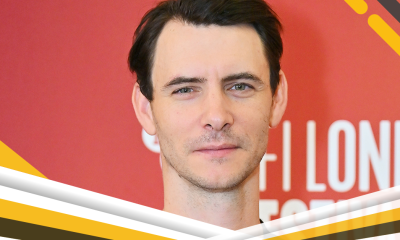Influencer’s Blazer: Is It Black or Navy? The Debate!

The internet has once again been thrown into a captivating debate over color perception, reminiscent of the viral “The Dress” phenomenon from 2015. This time, an influencer has sparked widespread discussion and divided opinions regarding the true hue of her blazer. The question at the heart of the matter: is it black or navy?
The Viral Blazer Debate: Black, Navy, or Something Else?
The recent online sensation began when influencer Lauren James shared a video on social media, seeking her followers’ help to identify the color of her oversized blazer. Seated on public transport, James highlighted the perplexing discrepancy between how the blazer appeared on her phone screen versus in real life. While the camera seemed to render it as black, she noted that in person, it leaned more towards navy.
In her video, James directly addressed the confusion, stating, “On the camera, it does look black, but in real life, it looks navy, but I think it looks black.” This direct appeal to her audience, coupled with her own uncertainty, quickly propelled the clip to viral status, garnering tens of thousands of views and igniting a fierce discussion in the comments section.
The Science Behind the Shade Shift
This kind of visual ambiguity is not new and taps into the fascinating complexities of human color perception. The infamous “The Dress” debate provided a real-world demonstration of how our brains interpret colors differently based on assumptions about lighting conditions.
Several factors contribute to these optical illusions:
- Lighting Conditions: The type and intensity of light illuminating an object play a crucial role. Natural daylight, often with a bluish cast, can make colors appear different than under artificial, often yellowish, indoor lighting. Our brains constantly try to compensate for these chromatic biases to achieve “color constancy,” aiming to perceive an object’s true color regardless of the light source.
- Screen Calibration: The display settings of devices (phones, monitors) vary widely in color accuracy, brightness, and contrast. What appears one color on a creator’s phone might look entirely different on a viewer’s uncalibrated screen.
- Individual Perception: Each person’s visual system is unique. Differences in the density of pigments in the eye, the number of cone cells, and even whether someone is a “lark” (early riser, more accustomed to daylight) or an “owl” (night person, more exposed to artificial light) can influence how colors are perceived. When the brain lacks sufficient information, it fills in gaps based on prior experiences and assumptions, leading to different interpretations.
Divided Opinions and Online Commentary
The comments section of Lauren James’s video quickly became a battleground of perception. Viewers were starkly divided, much like the original “The Dress” debate where people vehemently saw either blue and black or white and gold.
Many unequivocally stated, “It looks black to me,” or “It is blackkkkk.” However, a significant portion of the audience was equally convinced otherwise, with comments like “Navy lol,” “Navy for sure,” and “Definitely navy hun.” Adding another layer of complexity, some users even suggested the blazer was neither, proposing it was “Very dark grey.” This ongoing back-and-forth highlights the subjective nature of visual experience and the power of optical illusions to challenge our shared reality.
The Enduring Fascination with Visual Ambiguity
Debates surrounding visual ambiguities, like the color of a blazer or a dress, continue to captivate the internet because they expose the remarkable and often surprising variability in human perception. They serve as a powerful reminder that what one person sees is not necessarily what another perceives, even when looking at the exact same image or object. These phenomena are not merely trivial online discussions; they are real-world demonstrations of neuroscience and vision science at play. They underscore how our brains constantly work to make sense of the visual world, often making assumptions that lead to vastly different, yet equally valid, interpretations.
Ultimately, the blazer debate, much like its predecessors, offers a low-stakes yet highly engaging example of how our individual experiences and the conditions under which we view something can profoundly shape our reality. So, the question remains: do YOU think it’s black or navy?












